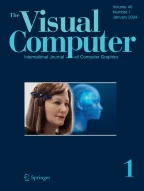Abstract
Masquerade attack on biometric hashing, which reconstructs the original biometric image from the given hashcode, has been given much attention recently. It is mainly used to validate the security of biometric recognition system or expand existing biometric databases like face or iris. However, an existing state-of-the-art method tends to ignore the perceptual quality of synthesized biometric images in the attack, and consequently, the synthetic images can be easily differentiated from real images. To obtain the high-perceptual-quality image which can simultaneously pass the validation of recognition system, we introduce a new target combining semantic invariability in hashing space and perceptual similarity in biometric space. In order to simulate the mapping from images to hashcodes and tackle the derivative problem related to discrete hashcodes in hashing space, we propose a DNN-based network named SimHashNet. Then we incorporate the SimHashNet into a generative adversarial network as our model named BiohashGAN to generate synthetic images form hashcodes. Experiment result on dataset CASIA-IrisV4.0-Interval and CMU PIE demonstrates that the synthetic images obtained from our model can pass the validation of recognition system and simultaneously maintain high perceptual quality.
Similar content being viewed by others
Explore related subjects
Discover the latest articles, news and stories from top researchers in related subjects.References
Nagar, A., Nandakumar, K., Jain, A.K.: Biometric template transformation: a security analysis. In: Proceedings of SPIE, 7541 (2010)
Jain, A.K., Nandakumar, K., Nagar, A.: Biometric template security. EURASIP J. Adv. Signal Process. 2008(11), 113 (2008)
Prabhakar, S., Pankanti, S., Jain, A.K.: Biometric recognition: security and privacy concerns. IEEE Secur. Priv. 1(2), 33–42 (2003)
Jain, A.K., Ross, A., Prabhakar, S., et al.: An introduction to biometric recognition. IEEE Trans. Circuits Syst. Video Technol. 14(1), 4–20 (2004)
Ross, A.A., Shah, J., Jain, A.K.: Toward reconstructing fingerprints from minutiae points. In: Proceedings of SPIE—The International Society for Optical Engineering, 5779 (2005)
Venugopalan, S., Savvides, M.: How to generate spoofed irises from an iris code template. IEEE Trans. Inf. Forensics Secur. 6(2), 385–395 (2011)
Galbally, J., Ross, A., Gomez-Barrero, M., Fierrez, J., Ortega-Garcia, J.: Iris image reconstruction from binary templates: an efficient probabilistic approach based on genetic algorithms. Comput. Vis. Image Underst. 117(10), 1512–1525 (2013)
Adler, A.: (2003) Sample images can be independently restored from face recognition templates. In: CCECE 2003 - Canadian Conference on Electrical and Computer Engineering. Toward a Caring and Humane Technology (Cat. No.03CH37436), vol. 2, pp. 1163–1166
Lee, Y., Chung, Y., Moon, K.: (2009) Inverse operation and preimage attack on biohashing. In: 2009 IEEE Workshop on Computational Intelligence in Biometrics: Theory, Algorithms, and Applications, pp. 92–97. IEEE
Lacharme, P., Cherrier, E., Rosenberger, C.: Preimage attack on biohashing. In: International Conference on Security and Cryptography, pp. 1–8 (2013)
Feng, Y.C., Lim, M.-H., Yuen, P.C.: Masquerade attack on transform-based binary-template protection based on perceptron learning. Pattern Recogn. 47(9), 3019–3033 (2014)
Wang, Y., Hamid Palangi, Z., Wang, J., Wang, H.: Revhashnet: Perceptually de-hashing real-valued image hashes for similarity retrieval. Signal Process. Image Commun. 68, 68–75 (2018)
Wang, Y., Ward, R., Jane Wang, Z.: Coarse-to-fine image dehashing using deep pyramidal residual learning. IEEE Signal Process. Lett. 26(9), 1295–1299 (2019)
Kaplan, E., Gursoy, M.E., Nergiz, M.E., Saygin, Y.: Known sample attacks on relation preserving data transformations. IEEE Trans. Dependable Secure Comput. 17(2), 443–450 (2020)
He, K., Zhang, X., Ren, S., Sun, J.: Deep residual learning for image recognition. In: Proceedings of the IEEE Conference on Computer Vision and Pattern Recognition, pp. 770–778 (2016)
Goodfellow, I., Pouget-Abadie, J., Mirza, M., Xu, B., Warde-Farley, D., Ozair, S., Courville, A., Bengio, Y.: Generative adversarial nets. In: Advances in Neural Information Processing Systems, pp. 2672–2680 (2014)
Zhang, H., Xu, T., Li, H., Zhang, S., Wang, X., Huang, X., Metaxas, D.N.: Stackgan: Text to photo-realistic image synthesis with stacked generative adversarial networks. In Proceedings of the IEEE International Conference on Computer Vision, pp. 5907–5915 (2017)
Dumoulin, V., Visin, F.: A guide to convolution arithmetic for deep learning. arXiv: Machine Learning (2016)
Odena, A., Dumoulin, V., Olah, C.: Deconvolution and checkerboard artifacts. Distill (2016)
Dong, C., Loy, C.C., He, K., Tang, X.: Image super-resolution using deep convolutional networks. IEEE Trans. Pattern Anal. Mach. Intell. 38(2), 295–307 (2016)
Xian, Y., Schiele, B., Akata, Z.: Zero-shot learning-the good, the bad and the ugly. In: Proceedings of the IEEE Conference on Computer Vision and Pattern Recognition, pp. 4582–4591 (2017)
Gong, Y., Lazebnik, S., Gordo, A., Perronnin, F.: Iterative quantization: a procrustean approach to learning binary codes for large-scale image retrieval. IEEE Trans. Pattern Anal. Mach. Intell. 35(12), 2916–2929 (2013)
Heusel, M., Ramsauer, H., Unterthiner, T., Nessler, B., Hochreiter, S.: Gans trained by a two time-scale update rule converge to a local nash equilibrium (2017)
Jin, A.T.B.L., David, N.C., Goh, A.: Biohashing: two factor authentication featuring fingerprint data and tokenised random number. Pattern Recogn. 37(11), 2245–2255 (2004)
Acknowledgements
This work is supported by the National Natural Science Foundation of Guangdong [Grant No.2018A030313994, Grant No. 2017A030312008] and the Guangzhou science and technology plan project [Grant No.202002030298].
Author information
Authors and Affiliations
Corresponding author
Ethics declarations
Conflict of interest
The authors declare that they have no conflict of interest.
Additional information
Publisher's Note
Springer Nature remains neutral with regard to jurisdictional claims in published maps and institutional affiliations.
Rights and permissions
About this article
Cite this article
Wu, Z., Meng, K., Wo, Y. et al. Masquerade attack on biometric hashing via BiohashGAN. Vis Comput 38, 821–835 (2022). https://doi.org/10.1007/s00371-020-02053-7
Accepted:
Published:
Issue Date:
DOI: https://doi.org/10.1007/s00371-020-02053-7
